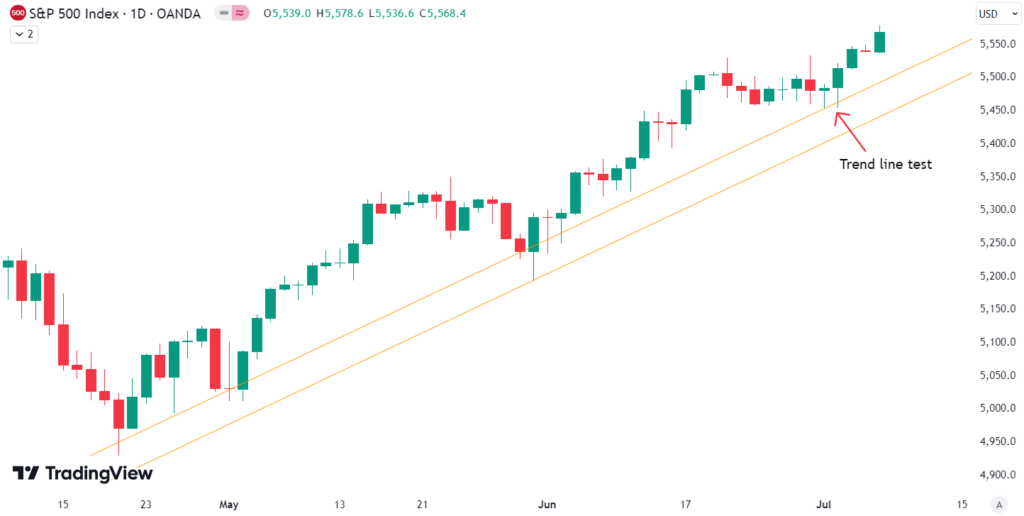This week, the S&P 500 had a gain of 1.6%. The index rallied on Tuesday after testing a trend line on the daily chart (orange). On Wednesday, the index broke out of the slightly downward-pointing trend channel (gray), retested it, and had another good rally which continued into Friday, ending the week strong. This week’s action was on light trading volume due to the 4th of July holiday in the US. We’ll see what happens next week when the volume comes back.

Our last position which we placed has been active since April 25th. The position is currently up by 29,4%.
Are you wondering when to buy the S&P 500 as an investor? Explore our tailored services and join our growing community of do-it-yourself investors who have successfully navigated the market with our guidance.
Premium Guide
Advanced Investing Signals
$139 / Month
Basic Guide
Basic Investing
Signals
$49 / Month
Simple Guide
Selected
Signals
Free
Get started with our most popular service and sign up for our Simple Guide
Since the April low, the S&P 500 is up 12.8%. After a week of sideways correction, this week the S&P had another good gain. Last week, we mentioned the two orange trend lines that define the uptrend since the April low. This week, one of those trend lines was tested and once again it provided support. The S&P 500 bounced right off the trend line test with a couple of strong days. We can only restate what we said last week: if the orange trend lines get broken, a larger correction is likely to occur. The strong overbought conditions on the longer time frames still persist, suggesting that further upside remains limited. Because of this, there are two key actions to take at the moment. First, manage risk by taking profits, reducing positions slightly, or deploying some hedges. Second, wait for better opportunities and for the overbought conditions on the longer time frames to resolve. For subscribers, it is crucial to follow our risk management measures provided with all our services to protect against losses in case support zones break. Follow us for updates and guidance on navigating these market conditions.

The next few months
On the chart, you can see the seasonality for the S&P 500 in an election year, which anticipates weakness in May and then strongly rising prices until early September. This is followed by a bigger correction until the election in early November. From mid-June to the end of July, seasonality suggests some weakness and only moderate rising prices. This fits very well with our current analysis of overextension to the upside and the probability of some pullback. Of course, the seasonality data should be taken cautiously, especially this year because we have already had a significant rise in prices. Investors should consider both seasonality trends and our analysis for a balanced view. Proper risk management is essential in navigating these market conditions.

Our Market Dashboard provides a quick overview of the current market conditions and, more importantly, the associated risk. You can view a chart of one of our tools, the Risk Level Indicator, showing predicted risk from 1998 to 2024. If you are interested, you can visit our Dashboard site here.

The world of finance is complex and includes many technical terms. For explanations of these terms, I recommend using the Investopedia dictionary.

Leave a Reply